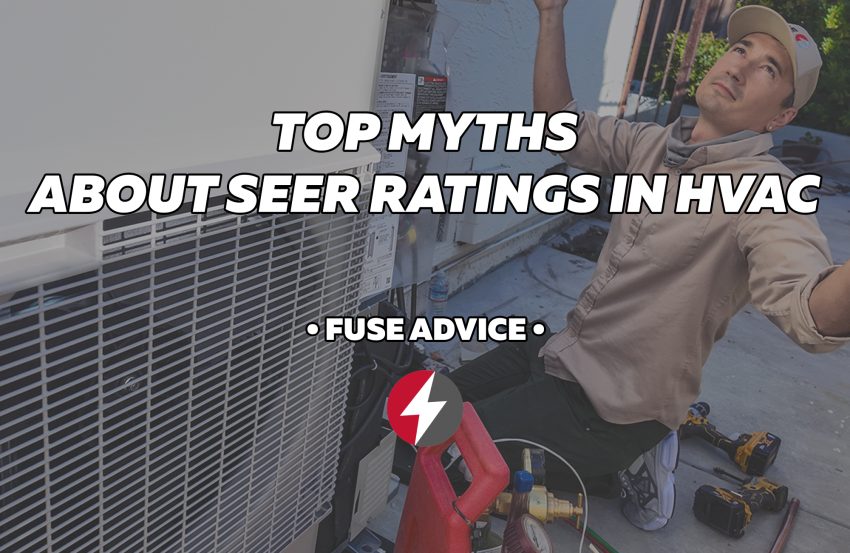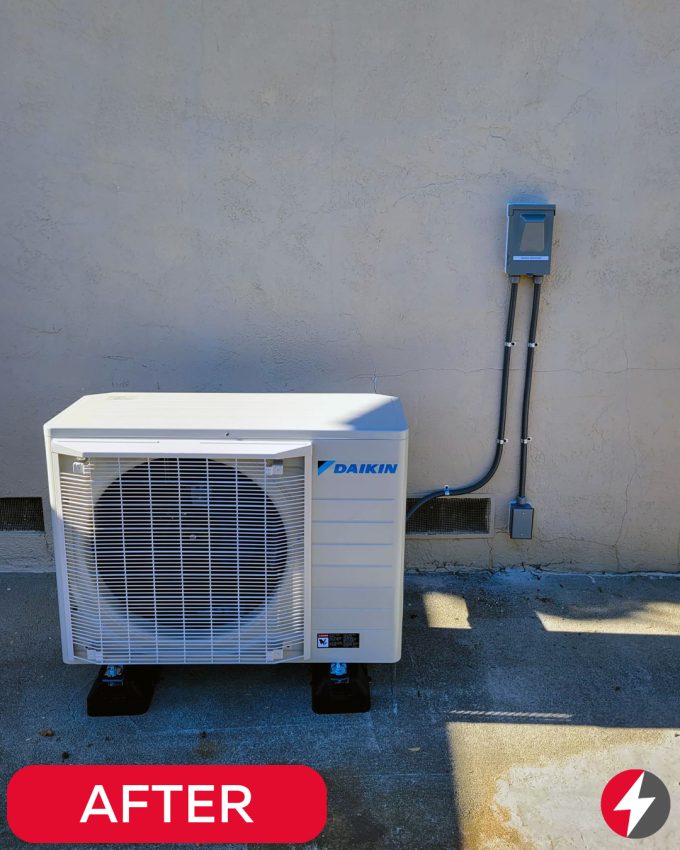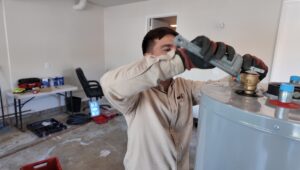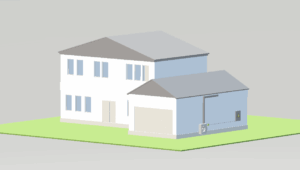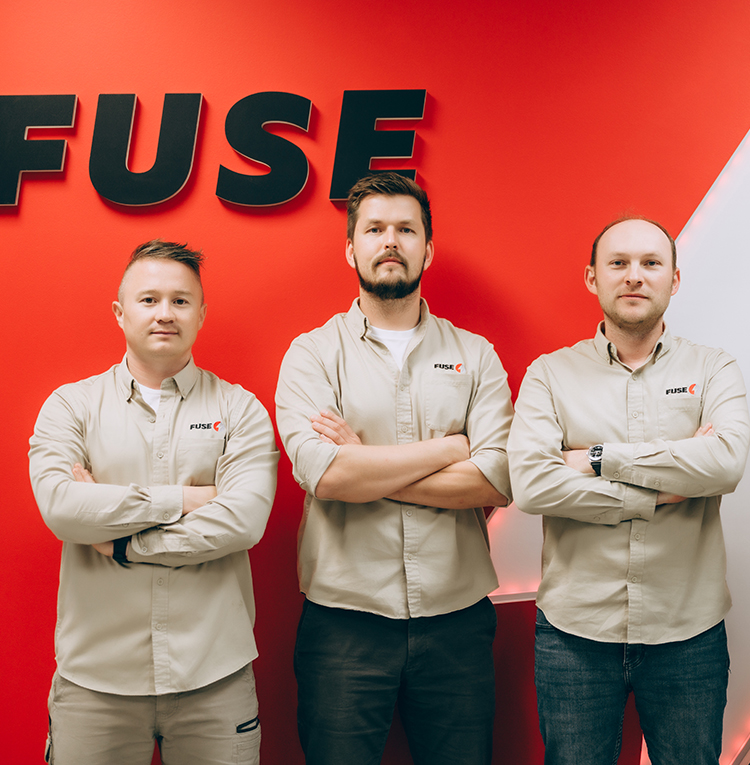If you ever had an HVAC system installed you definitely have met something called SEER. Maybe, you even wondered what this seasonal energy efficiency ratio means. Probably, you even thought that high SEER guarantees both high savings and superior performance. But is it really so? We are here to debunk myths about SEER ratings.
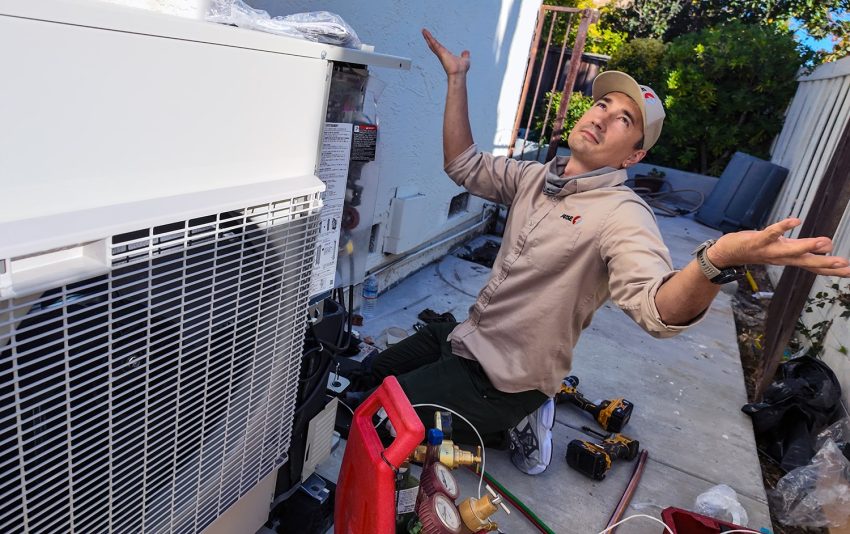
Understanding SEER Ratings
What is this SEER and what does it actually represent? As the name suggests, it measures the efficiency of heating systems over an entire cooling season. So the higher SEER rating is the more efficient your system is meant to be.
Myth 1. Higher SEER–Better Performance
Fact: SEER ratings indicate efficiency, not necessarily performance.
It’s easy to confuse efficiency with performance. But SEER is definitely about efficiency. Surely, an HVAC system with high SEER might be cheaper due to savings on energy costs. On the other hand, it doesn’t mean that HVAC with lower SEER couldn’t be more powerful or efficient. There are plenty of other factors that influence performance capacity such as the system’s design, quality of installation, and maintenance.
Myth 2. Systems With Higher SEER Rating Will Always Save You Money
Fact: There are several factors that influence energy savings. But high SEER is one of them.
Energy efficiency is a really pleasant thing for your budget. Keep in mind that SEER is tested in perfect and stable conditions, so in real life it works a little bit differently. Also while using your heating system, remember that your spendings also consists of usage patterns, the local climate, and your electricity rates. In mild climate savings on high-SEER equipment won’t be big since you won’t use air conditioning actively. Nevertheless, in hot and humid areas with heavy AC usage a higher SEER rating could result in noticeable savings.
Additionally, the cost difference between high-SEER units and standard-SEER units can be significant. If you don’t have high energy demands, it may take years to recoup the cost of a high-SEER system through energy savings.
Myth 3. SEER Ratings Are the Only Factor to Consider When Buying an HVAC System
Fact: Consider all factors like size, type, installation quality and SEER ratings when buying an HVAC system.
SEER ratings should not be the only consideration when selecting an HVAC system. To achieve best efficiency and performance consider the following factors:
- Size of the System. Oversized or undersized systems can lead to poor performance, higher energy bills, and premature wear.
- Type of System. Different systems have different efficiencies and appliances. You may choose between split systems, ductless systems, and heat pumps.
- Quality of Installation. A high-SEER system installed incorrectly won’t operate efficiently.
- Additional Features. Some units include variable-speed fans, humidity control, or smart thermostats that can enhance comfort and save energy, independent of SEER.
Myth 4. All High-SEER Units Are Expensive to Maintain
Fact: High-SEER units may require some specific maintenance, but overall maintenance costs are not necessarily higher.
There’s a misconception that high-SEER HVAC units require more maintenance and are therefore more costly in the long run. While it’s true that high-efficiency units may incorporate advanced technology (such as variable-speed compressors) that requires occasional inspection, it doesn’t mean they are expensive or difficult to maintain. Regular preventive maintenance is recommended for all HVAC systems, whether high SEER or standard SEER.
In fact, with proper upkeep, a high-SEER unit can be as durable and reliable as any other system. That’s because such systems can operate in low-capacity mode so they’ll age slower.
Myth 5. The SEER Rating is All You Need to Look At for Efficiency
Fact: There are other metrics that influence overall efficiency except for SEER.
SEER ratings are about cooling efficiency. At the same time, this metric doesn’t include efficiency in heating mode. For heating, metrics such as Heating Seasonal Performance Factor (HSPF) and Annual Fuel Utilization Efficiency (AFUE) are also crucial.
In regions where heating demand is high HSPF ratings are more important considering an energy-efficient system during both the heating and cooling seasons.
Myth 6. You Should Always Upgrade to the Highest SEER Rating Available
Fact: The highest SEER rating won’t be cost-effective in all cases.
It might seem that investment in the highest SEER will pay off. However, this isn’t exactly like that. While high-SEER units offer energy savings, the initial cost can be significantly higher, and it may take more years to break even, especially in moderate climates with lower energy demands.
Usually, a mid-range SEER rating that balances efficiency with upfront cost is more practical. To make a perfect decision, better consult an HVAC specialist who can determine which SEER rating will suit you the best.
Myth 7. Older HVAC Systems Can’t Compete with Newer High-SEER Models
Fact: Even though old systems can’t perform modern SEER ratings, they still can work efficiently if well maintained.
Changing air filters, cleaning coils and inspecting ducts will keep older systems in better shape so they can run more efficiently. However, they won’t last as long as an upgraded system with higher SEER.
Myth 8. SEER Ratings Don’t Impact Environmental Footprint
Fact: You can reduce your carbon emissions and environmental impact by using a higher SEER system.
On the first sight, it might not be that obvious that systems with higher SEER give the benefit of reducing their environmental impact. Since HVAC with higher efficiency consumes less energy it leads to lower carbon emission. Over time, this energy efficiency can contribute to significant reductions in greenhouse gas emissions, particularly in regions reliant on fossil-fuel-based power generation.
Conclusion
SEER ratings play an essential role in guiding consumers toward energy-efficient HVAC choices, but they’re the only part of the equation. By understanding the myths and realities of SEER, you can make more informed decisions, balancing energy efficiency, comfort, and cost. Whether upgrading to a new system or maintaining an existing one, consulting with HVAC professionals and considering the local climate and usage patterns will help you get the most out of your investment. Contact us today at (669) 666-9216 or support@fuseservice.com to learn more and pick your perfect SEER rating!
